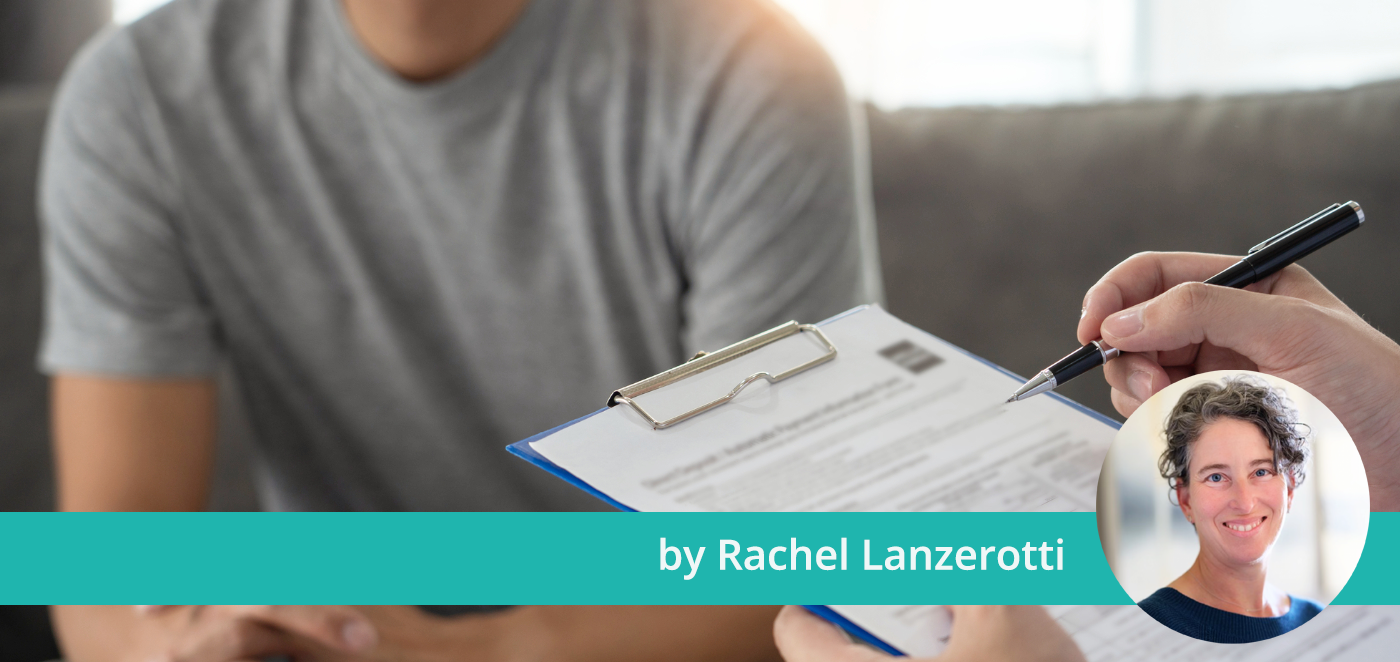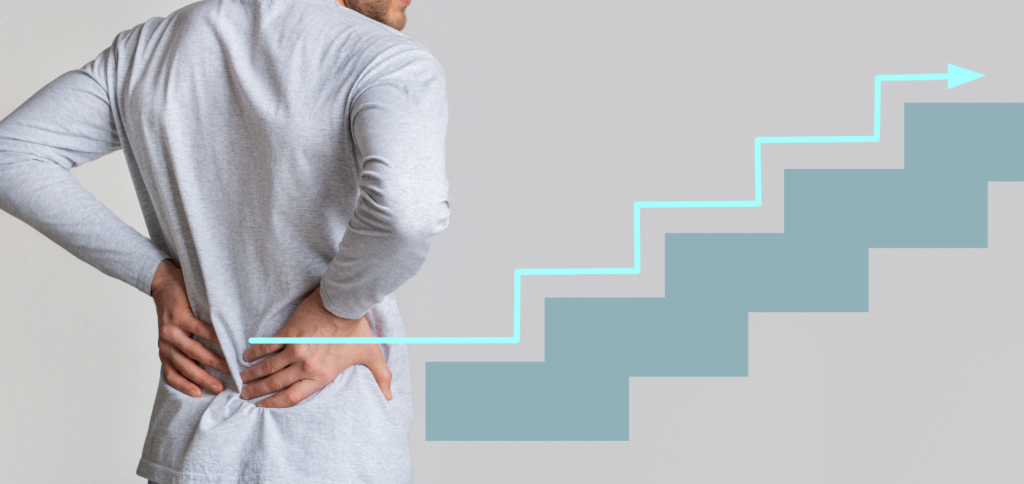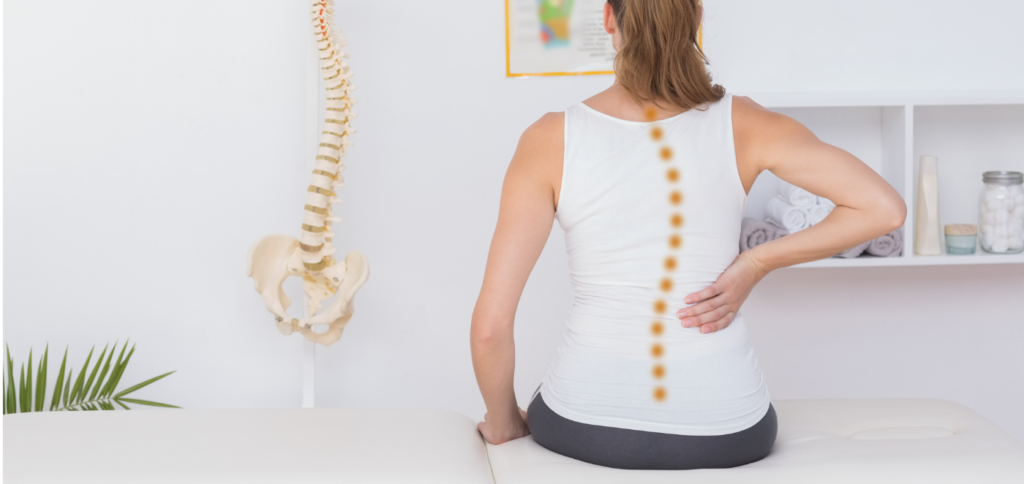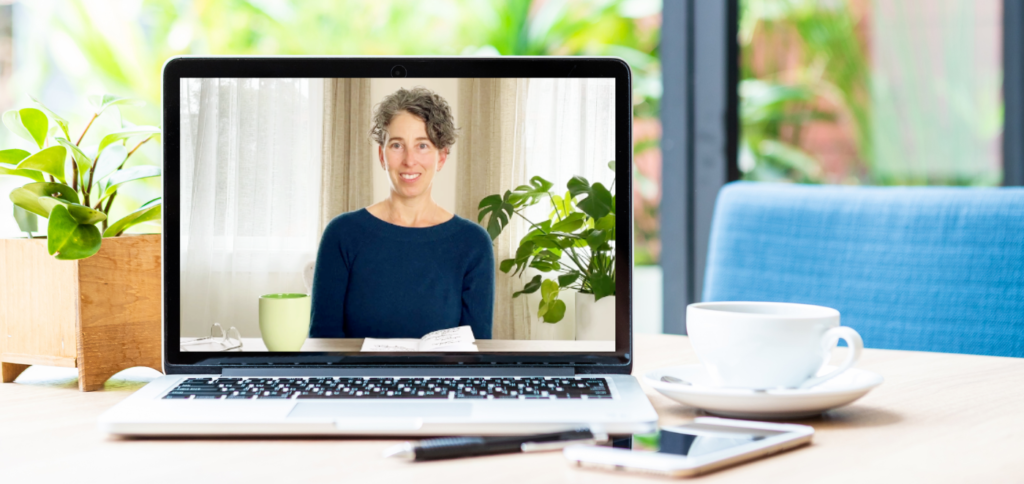
03 Apr What to ask a new client with chronic back pain
A new client reaches out to you, saying they are suffering with back pain. It has eluded their efforts to feel better. The ongoing or recurring discomfort is keeping them from resting well, working well, or doing activities with family and friends. How do you begin working with them? This is the first of a series of posts on the topic of chronic back pain, and how yoga therapists can help.
What is meant by an aching back can vary as much as its causes. When clients say, “back pain,” wait to hear and see more from them about this. When a client with back pain arrives, ask them, “What do you already know?” Express curiosity about what they’ve found that helps or eases discomfort. Also ask what they know about what exacerbates the pain. Listen for possible causes (original and current) of pain, as well as the solutions and supports they’ve discovered.
Before making a plan for Yoga Therapy, ask them to point to the area of their body where they feel pain now, and the area that has been most consistently painful. You may be surprised to see a client point to their rear end, a shoulder, their sacrum, mid-back rather than lower back! Ask if it’s on both sides or one side only. Does the pain “wrap around”? Or does discomfort include other areas of their body? Have they noticed whether it changes with regular or repeating activities (like meals or menstrual cycles or a daily walk or soccer practice)?
For the client, this conversation is part of their somatic education and cultivates body literacy and confidence. Here are a few questions to get started:
- Related to the reasons you sought Yoga Therapy, how are you feeling today?
- How would you describe the pain or discomfort now? Is this similar or different from what you’ve noticed before?
- Would you be willing to point to the area(s) of your body where you are feeling pain today? Is this similar or different from the area(s) you’ve noticed before?
- Can you tell me a bit about what your activity level was like (and what kind of activity) before you first experienced this pain? How has this changed?
- What do you know already about what has helped you with the pain or discomfort?
 Check out Rachel’s Real-Life Case Studies video series on the Sequence Wiz community site. (Available exclusively to Sequence Wiz members. Learn more about Sequence Wiz membership >)
Check out Rachel’s Real-Life Case Studies video series on the Sequence Wiz community site. (Available exclusively to Sequence Wiz members. Learn more about Sequence Wiz membership >)
Part 1: What questions to ask about lower back discomfort
Part 2: Using small movements and postural awareness to relieve pain and increase confidence
Part 3: Using chakra exploration and bija mantra to strengthen from the ground up
Part 4: Using restorative poses, asymmetrical movement, and directed breathing to heal physically and physiologically
Part 5: Commonalities and differences in cases of lower back pain
Join our Case Studies group to follow along!
More articles on this topic
How working developmentally helps clients with back pain
I first heard the term “developmental practice,” and directly experienced this approach myself when starting to teach yoga for low back pain ten years ago. Developmental movement practices are taught sequentially, reinforced gradually, and employed therapeutically.
Simple steps or skills accrue and gradually build into competence and mastery. This implies a logical and stepwise approach, marking milestones. It is about how we develop and progress, where each skill learned depends upon a previous one. We have many shared idioms, based on our growth as humans that move, that evoke this. For example, “crawl before you walk.”
Where to begin with spondylolisthesis and back pain
A new client contacts you about ongoing pain that bothers him most in the mornings and after athletics that include running. He reports, and your observations confirm, lower back pain plus hamstring tension that impact his ability to walk and move comfortably. Now in his early 40’s, he would like to feel better at work as well as at play with his young kids. He tells you that he has a medical diagnosis of spondylolisthesis. As a Yoga Therapist, where do you begin?
Where to begin with scoliosis and back pain
Perhaps reading this first paragraph you’ll recognize, right away, why it might challenge a Yoga Therapist to figure out how to work with a new client who has scoliosis and back pain: Scoliosis is a sideways curvature of the spine to one side— to the left or right (e.g., curve to the right in the upper back, and to the left in the lower back). Add to this a twisting or rotation of the spine that leads to structural imbalances, and ribs pushing forward or backward to create concavity (inward) or convexity (outward) in the back body.
How to help your students take the load off their back: A conversation with Rachel Lanzerotti
Do you have questions about working with students with chronic lower back pain? Join experienced Yoga Therapists Rachel Lanzerotti and Olga Kabel for a casual discussion of practical teaching strategies to help students who experience back discomfort due to various diagnoses.
Rachel Lanzerotti (C-IAYT) is a Yoga Therapist with over 20 years in the field who specializes in chronic back pain recovery. Rachel will share her experiences with specializing in yoga therapy for back pain recovery and will describe her process of interviewing, evaluating, setting goals, and designing practices for students with lower back pain.
About Rachel
Rachel Lanzerotti (MSW, E-RYT500, IAYT-Certified Yoga Therapist) is the Founder of Five Rivers Yoga Therapy and creator of The RE/ST Method for Pain Recovery™. She is a Body-Mind Yoga Therapist, meditation teacher, counselor, health educator and specialist in back pain relief.
Rachel has taught at UCSF Osher Center for Integrative Medicine and Spirit Rock Meditation Center, and was a featured presenter on “The Modern Science of Yoga” at the SF Asian Art Museum. She also launched the Aging Well program of San Francisco Village. She is a graduate and former faculty mentor with Essential Yoga Therapy Therapist Training.
Rachel has been published in numerous journals, research studies, and periodicals including Stanford Magazine, and with the Boston Women’s Health Book Collective on topics ranging from yoga, health, aging, and sexuality to gender, racial justice, and human rights.
She holds a BA in Human Biology from Stanford University and Master of Social Work (MSW) from San Francisco State University. For a decade prior to founding Five Rivers Yoga Therapy, Rachel ran an organizational consulting practice with community-based groups. She spent many years focused on direct action work for nonprofit and social change organizations.






